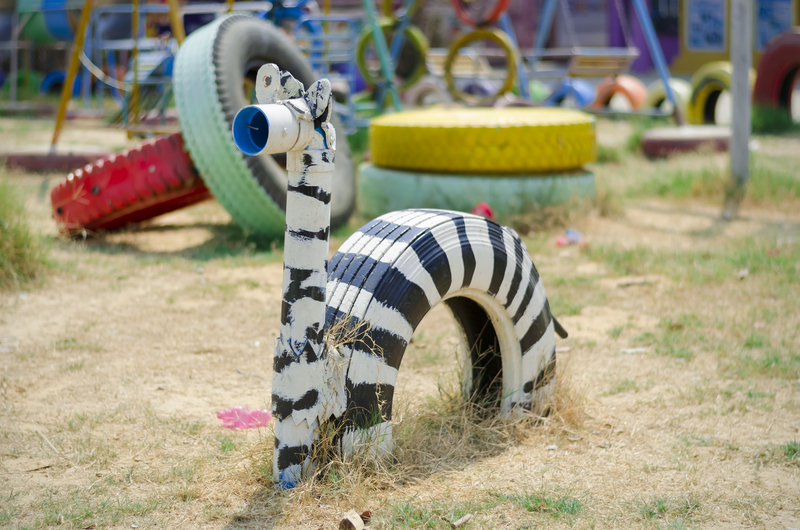Innovative Approaches to Responsible PPE Waste Management
Personal Protective Equipment (PPE) has become a staple in our daily lives, especially since the emergence of global health crises such as COVID-19. However, the surge in PPE use has led to an unprecedented increase in PPE waste, presenting significant challenges for waste management systems across the globe. Traditional waste disposal methods are proving insufficient for handling the growing volume and complexity of these materials. As a result, it is critical to explore innovative and responsible PPE waste management solutions to protect both public health and the environment.
Understanding the Environmental Impact of PPE Waste
The rapid adoption of masks, gloves, gowns, and face shields has generated millions of tons of additional plastic and textile waste annually. When not managed properly, PPE waste can find its way into landfills and natural habitats, contributing to environmental pollution and harming wildlife. Moreover, many PPE items contain synthetic polymers that are non-biodegradable and take hundreds of years to decompose.
- Marine Pollution: Discarded PPE often ends up in rivers and oceans, entangling marine animals or breaking down into microplastics.
- Landfill Overflow: Landfills worldwide struggle with the sudden influx of single-use PPE products.
- Hazardous Waste: Some PPE, especially from healthcare settings, can harbor pathogens, posing risks to sanitation workers and communities.
The Need for Innovative PPE Waste Disposal and Management Techniques
Traditional waste management methods--such as incineration and landfilling--are no longer sustainable due to their negative impact on the environment and climate. Instead, the focus is shifting towards innovative PPE waste management strategies that prioritize sustainability, contamination control, and resource recovery.
- Recycling and upcycling of PPE waste
- Biodegradable and compostable PPE alternatives
- Extended producer responsibility programs
- Advanced sterilization technologies
- Community and organizational engagement

Cutting-Edge PPE Waste Recycling Solutions
1. Mechanical Recycling of PPE Plastics
One of the most promising innovative approaches to responsible PPE waste management is the mechanical recycling of plastics. Mechanical recycling involves collecting, cleaning, shredding, and processing PPE (such as masks and face shields made from polypropylene) into new plastic products.
- Closed-loop recycling: Some PPE producers and hospitals use closed-loop systems, where waste PPE is sterilized, processed, and remanufactured into items such as benches, pavement tiles, or new PPE.
- Collaborative partnerships: Partnerships between healthcare providers, recycling firms, and manufacturers have proven effective for scaling up mechanical recycling operations.
However, challenges such as contamination and complex material structures still limit large-scale adoption. Cutting-edge decontamination and sorting technologies are at the forefront of overcoming these barriers.
2. Chemical Recycling and Pyrolysis
Chemical recycling, including pyrolysis, transforms complex PPE waste into basic chemical components through processes that break down polymers at high temperatures. These processes can convert PPE waste into fuels, oils, or reusable plastics.
- Energy recovery: Pyrolysis provides an alternative to landfilling by creating energy from otherwise unrecyclable PPE waste.
- Feedstock recycling: The resulting chemicals can serve as feedstock for new plastic production, closing the materials loop.
- Advanced chemical recycling plants are developing rapidly in Europe and Asia, presenting a scalable solution for PPE waste streams.
3. Upcycling PPE Waste into Valuable Products
Upcycling goes a step further than recycling by transforming PPE waste into higher-value products. Innovative uses include:
- Construction materials: Used PPE can be incorporated into asphalt, concrete, and bricks, offering enhanced durability.
- Furniture and art installations: Creative upcycling projects transform PPE waste into benches, tables, and even public art to raise awareness about consumption and waste.
Pioneering organizations and researchers are developing new ways to integrate used PPE into construction materials, thus reducing both PPE waste and the need for virgin resources.
Compostable and Biodegradable PPE Solutions
The Rise of Eco-Friendly PPE Materials
One of the most important innovative ways for sustainable PPE waste management is to address the problem at its source: the materials used to create PPE. Manufacturers are developing PPE made from natural fibers and biopolymers, such as polylactic acid (PLA), cellulose, and other plant-based materials.
- Biodegradable masks and gloves: These decompose under natural conditions, minimizing pollution.
- Compostable gowns and shoe covers: Suitable for industrial composting, turning waste into nutrient-rich compost for agriculture.
- Increased adoption by hospitals and corporations to meet sustainability targets.
Advantages and Limitations
Adopting biodegradable PPE offers significant environmental benefits. However, it requires the establishment of suitable composting and waste management infrastructure, as not all biodegradable materials break down efficiently in landfills. Continued investment in composting facilities and public education is necessary to maximize the impact of these sustainable PPE alternatives.
Extended Producer Responsibility (EPR) Programs for PPE
What is EPR and Why Does It Matter?
Extended Producer Responsibility (EPR) is a policy approach that holds manufacturers accountable for the entire life cycle of the products they produce, including end-of-life management and disposal. Integrating EPR into PPE production ensures that producers take responsibility for collecting, recycling, or safely disposing of their products.
- Producer take-back schemes: Collection bins for used PPE at retail and healthcare facilities, funded and managed by the PPE producers.
- Incentivized recycling: Manufacturers incentivize consumers and institutions to return used PPE through deposit-refund systems or discounts.
- Collaboration between manufacturers, governments, and recyclers for transparent waste tracking and reporting.
Countries with progressive EPR regulations are experiencing higher recycling rates and reduced illegal dumping of PPE waste. This approach encourages innovation in PPE waste reduction and material design.
Sterilization and Reuse: Reducing PPE Waste at Source
Advanced Sterilization Technologies
Sterilization technologies enable the safe reuse of PPE, significantly reducing the volume of waste generated.
- UV-C Light: Ultraviolet germicidal irradiation can effectively disinfect certain PPE items, making them safe for multiple uses.
- Hydrogen Peroxide Vapor: This system sterilizes PPE rapidly, extending the lifespan of masks and respirators.
- Ozone-based sterilization: Allows bulk decontamination for hospitals and large institutions.
Barriers and Considerations
Not all PPE is suited for reuse due to potential degradation or loss of protective qualities. However, advances in material science and sterilization processes are expanding the range of reusable PPE. Strict quality standards and validation protocols are essential to maintain safety during reuse.
Community-Driven and Circular Economy Initiatives
Community Collection and Education Campaigns
Grassroots organizations and local governments play a vital role in the responsible management of PPE waste. Community-driven programs include:
- Designated PPE disposal bins: Public places and transit centers offer separated bins for PPE waste to prevent contamination of recycling streams.
- Awareness programs: Public education about proper PPE disposal, the dangers of contamination, and the benefits of recycling or composting.
- School and workplace campaigns to reduce single-use PPE where safe alternatives exist.
Circular Economy Models for PPE
A circular economy framework seeks to eliminate waste by keeping materials in use for as long as possible. For PPE, this involves:
- Design for durability and recyclability
- Collection and processing systems that enable recycling or upcycling
- Incentivizing return and reuse among consumers, institutions, and manufacturers
Circular PPE systems are emerging around the world, demonstrating measurable reductions in waste, resource consumption, and environmental impact.
Policy and Regulatory Innovations
Setting Standards and Regulations for PPE Waste
Governments play an essential role in ensuring responsible PPE waste management through policies, guidance, and enforcement.
- Mandatory segregation: Regulations requiring the separation of PPE waste from general waste at source.
- Safe collection and transport: Establishing logistics and safety guidelines for collecting contaminated PPE waste.
- Incentives for sustainable materials: Tax breaks or subsidies for manufacturers producing biodegradable or recyclable PPE.
International bodies such as the World Health Organization (WHO) and the United Nations Environment Programme (UNEP) are also partnering with local agencies to disseminate best practices for PPE waste management worldwide.
Case Studies: Leaders in Innovative PPE Waste Disposal and Management
Success Stories and Emerging Best Practices
- TerraCycle's PPE Recycling Programs: This global waste management company has introduced mail-in recycling solutions for masks, gloves, and other PPE, partnering with businesses and municipalities to divert waste from landfills.
- Australia's PPE Brick Road: Researchers at RMIT University incorporate shredded single-use face masks into road construction, demonstrating an innovative way to repurpose PPE waste and strengthen road materials.
- The UK's NHS PPE Waste Project: The National Health Service piloted a project to collect, sterilize, and recycle single-use PPE, aiming to create new products for the healthcare system.
- Zero Waste Scotland: A circular model launched across Scottish hospitals aims for maximum PPE reuse, recycling, and minimal environmental footprint.
These leading-edge projects underscore the potential for scalable, innovative solutions to the challenges of PPE waste.

Future Directions and Ongoing Research
Emerging Technologies and Solutions on the Horizon
Ongoing research is yielding even more innovative PPE waste management solutions. Some promising areas include:
- Smart bins with AI-powered sorting: These bins can detect and separate different waste streams, improving recycling rates and worker safety.
- Enzymatic breakdown of PPE plastics: Scientists are developing enzymes that can decompose certain synthetic polymers rapidly, providing an eco-friendly option for PPE waste processing.
- Advanced tracking and take-back systems using QR codes or RFID for monitoring PPE waste from point-of-use to disposal or recycling.
The commitment to innovation and collaboration is clear, as researchers, industries, governments, and communities work together to address the multifaceted challenges of PPE waste.
Conclusion: Driving Global Change Through Responsible PPE Waste Management
The rise of PPE waste during recent years has spotlighted critical gaps in waste management systems worldwide. By embracing innovative approaches to responsible PPE waste management, society can turn this environmental challenge into an opportunity for sustainability, job creation, and public health protection.
- Adopting modern recycling, upcycling, and compostable solutions significantly reduces environmental harm.
- Manufacturers, governments, and consumers all have a role in promoting circularity, responsibility, and innovation.
- Public awareness and education are fundamental to ensuring the success of new waste management initiatives.
As emerging technologies and collaborative models continue to develop, it is possible to envision a future where PPE waste is responsibly managed, fully integrated into circular systems, and no longer threatens the health of our planet.
Collective action, technological innovation, and a steadfast commitment to sustainability will drive us toward a cleaner, safer, and more resilient world--one where the essential protection provided by PPE does not come at the cost of environmental health.
